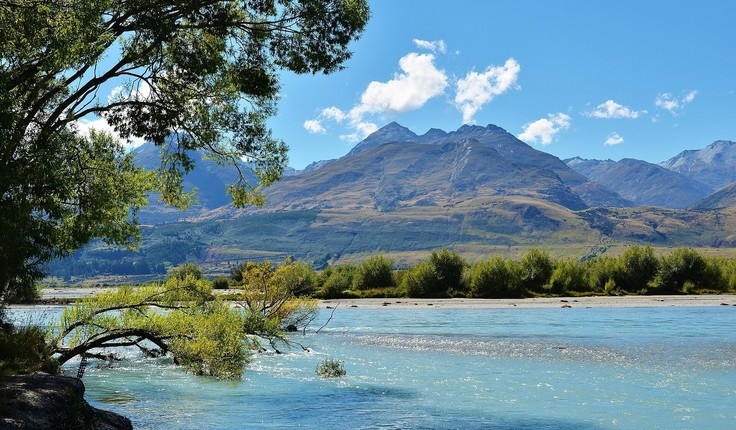News
RMA reforms promising
Posted 17 02 2021
in News

The devil may well be in the detail but on the face of it the Government plans for reformation of the Resource Management Act look promising says independent researcher, Dr Diane Menzies.
The Government’s announced three new pieces of legislation to replace the complex and lengthy RMA - the National and Built Environments Act (NBA); the Strategic Planning Act (SPA) and Climate Change Adaption Act (CAA). These are in line with recommendations from the independent Resource Management Review Panel.
The NBA will be progressed first, with the development of an exposure draft which will go through a special select committee inquiry from May to September. It’s hoped it’ll then be law by the end of next year. A collective of Māori entities will work with the Government on that exposure draft, a move that’s been welcomed by Dr Menzies as one of the most important features of the reform.
“I know that was a huge frustration, even though the RMA itself enabled that to happen it wasn’t actually happening, so this will change that stance,” she said. “Giving effect to Te Tiriti and having more inclusive decision making rather than keeping sectors of the population out of it, I would see as one of the major benefits.”
Dr Nicholas Kirk, an environmental social researcher at Manaaki Whenua-Landcare Research agrees. But he points out some iwi already struggle to participate in local government planning and consent processes, with different iwi having different capacities to contribute.
“To effectively partner with Māori, central and local government will need to recognise how past decisions have disempowered tangata whenua and made it more difficult for them to participate in decision making processes, while also providing mechanisms that enable Māori to contribute more easily to planning and policy processes.”
The Government says it’s aiming to pass both other pieces of legislation - the SPA and the CAA - in this parliamentary term.
Dr Menzies says one of the problems with the RMA has been it’s emphasis on mitigation rather than trying to look positively at what can be done in the future. She believes the shift in thinking in this new legislation towards positive outcomes will provide new opportunities for landscape architects, particularly around working with iwi, and in roles that take account of a more diverse population.
“I think that will be a catalyst for landscape architects and other designers thinking creatively rather than thinking about shrubbing it up or mitigating proposals that aren’t ideal or geared to the future. I think probably a key, to answer that question you had of ‘what is important’ I think it’s that 30 years of strategic planning that will help a lot.”
Dr Kirk again: "The shift from a complex effects-based management system towards one that focuses on the achievement of positive outcomes within environmental limits is to be lauded.

“These outcomes will need to be general enough to represent the enormous diversity in New Zealand’s built and natural environments, while also being specific and attainable.
“When trying to achieve this balance while setting positive outcomes, there is a risk we set unambitious outcomes that fail to redress the multiple overlapping problems New Zealand’s built and natural environments are experiencing.”
Dr Menzies is encouraging landscape architects to keep an eye out for the draft law and to be proactive in commenting or making submissions on it.
The key elements so far:
Natural and Built Environments Act
- Purpose of enhancing the quality of the built and natural environment for the wellbeing of current and future generations through achieving positive outcomes (within natural environment limits).
- Proposes a system of outcomes, limits and targets set through a national planning framework which will be incorporated into regional combined plans prepared by local and central government and mana whenua.
- Combined regional plans must be consistent with regional spatial strategies and direct which activities do and do not require approvals.
Strategic Planning Act
- The proposed Act provides for the development of long term regional spatial strategies that integrate land-use planning, environmental regulation, infrastructure provision and climate change response matters that fall under various legislative functions including the Natural and Built Environments Act, Local Government Act, Land Transport Management Act and Climate Change Response Act.
- The new Act will mandate use of spatial planning, requiring central government, local government and Māori to work together to develop long term regional spatial strategies (30 years minimum).
- Would require changes to other legislation to establish connections between regional spatial strategies and existing statutory policies and plans.
Climate Change Adaptation Act
- Focuses on the necessary steps to address the effects of climate change and natural hazards.
- Deals with the many complex legal and technical issues (e.g. liability and compensation) involved in the process of managed retreat.
- Minister for Climate Change will lead this legislation.
Share
19 Dec
Christmas break 2025

see you from 12 January
As we wrap up another big year, we’re taking a moment to pause, breathe, and enjoy a well-earned break. Meri …
18 Dec
President’s update

December 2025
Earlier this month I attended the Ngā Aho Māori Design Professionals Wānanga-ā-Tau at Te Aranga Marae in Flaxmere. Tuia Pito …
18 Dec
Awards 2026 update

An update as we warm up for the 2026 Awards kaupapa. Submissions will open in March and will run for …
Events calendar
Full 2025 calendar